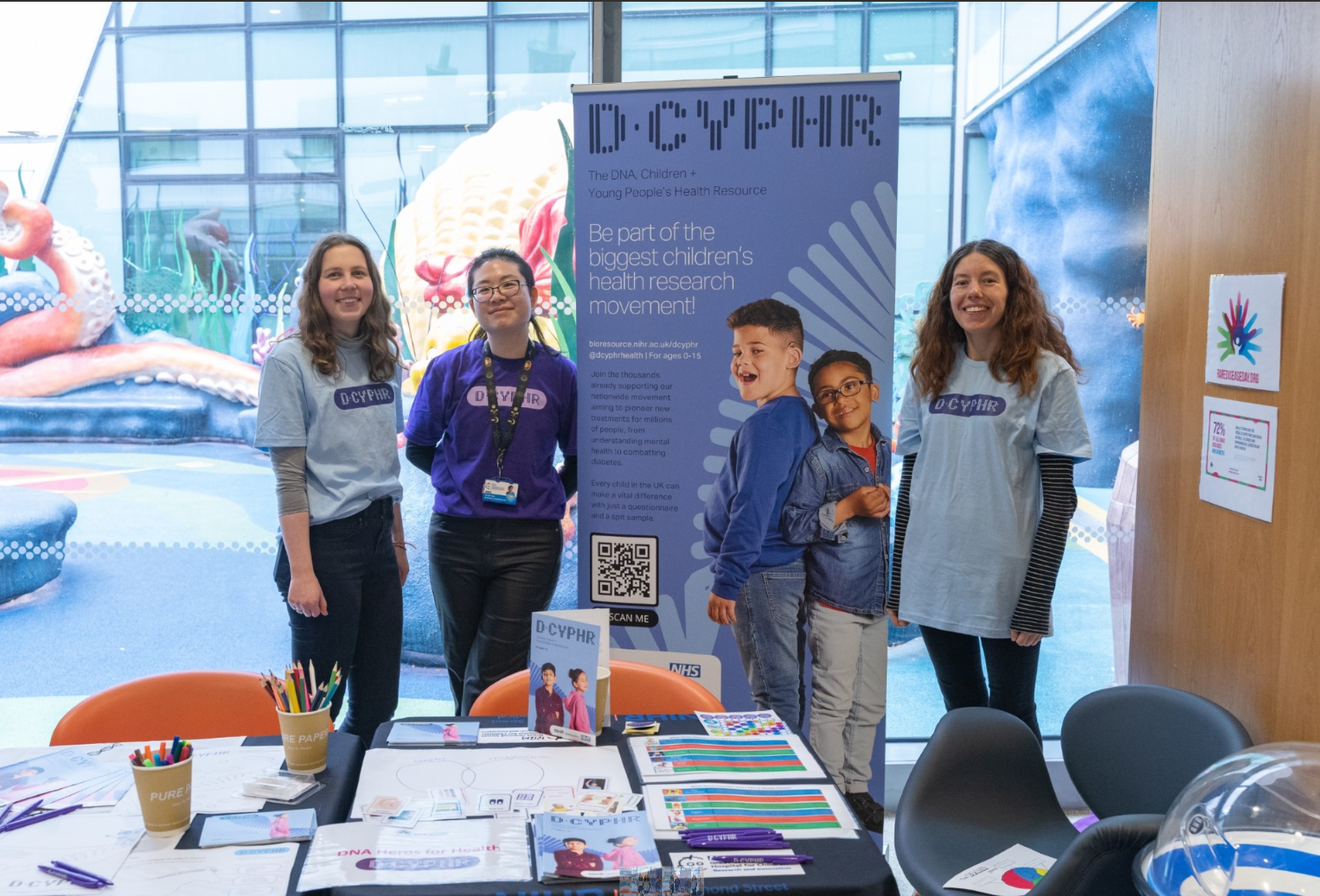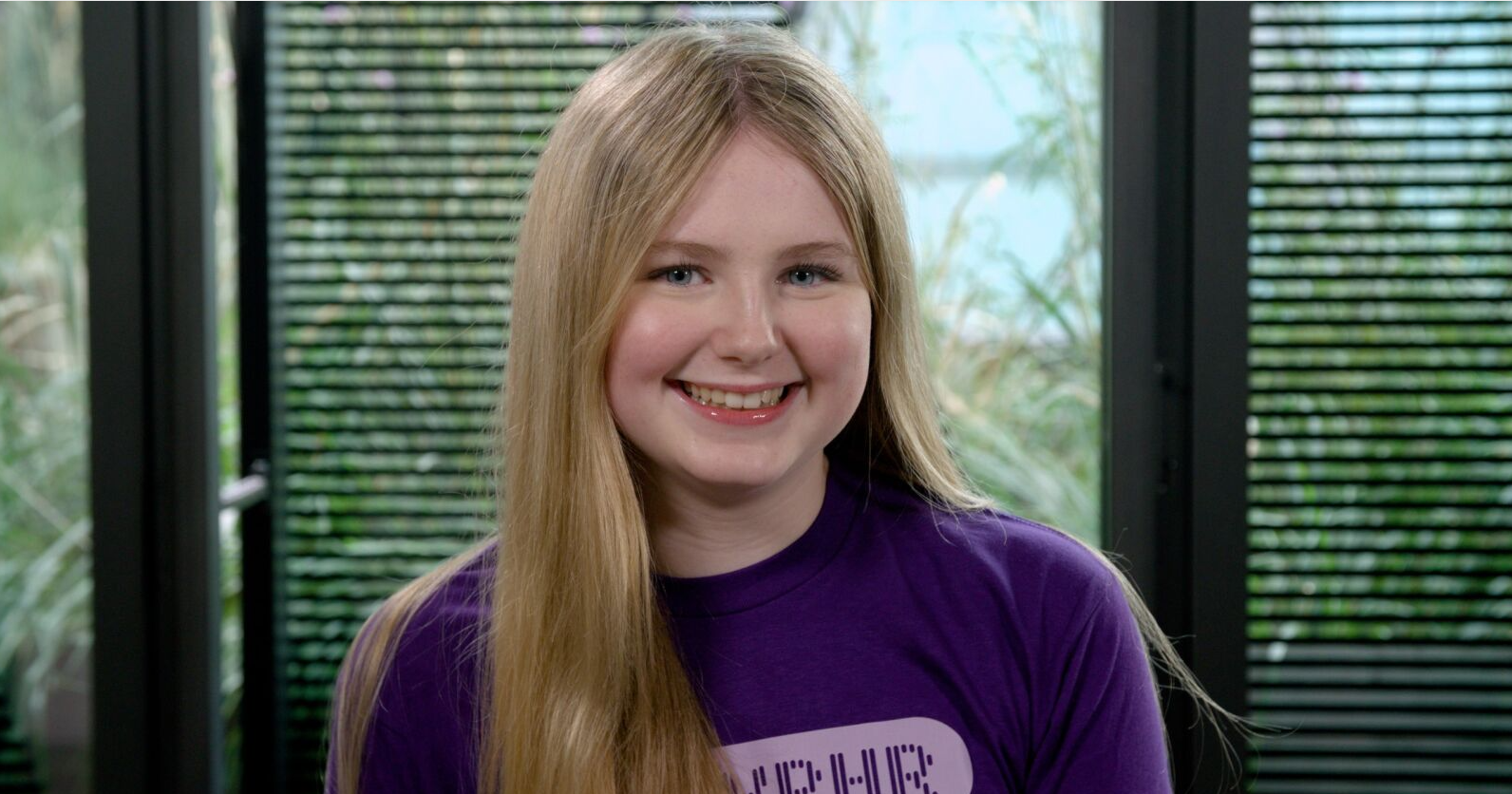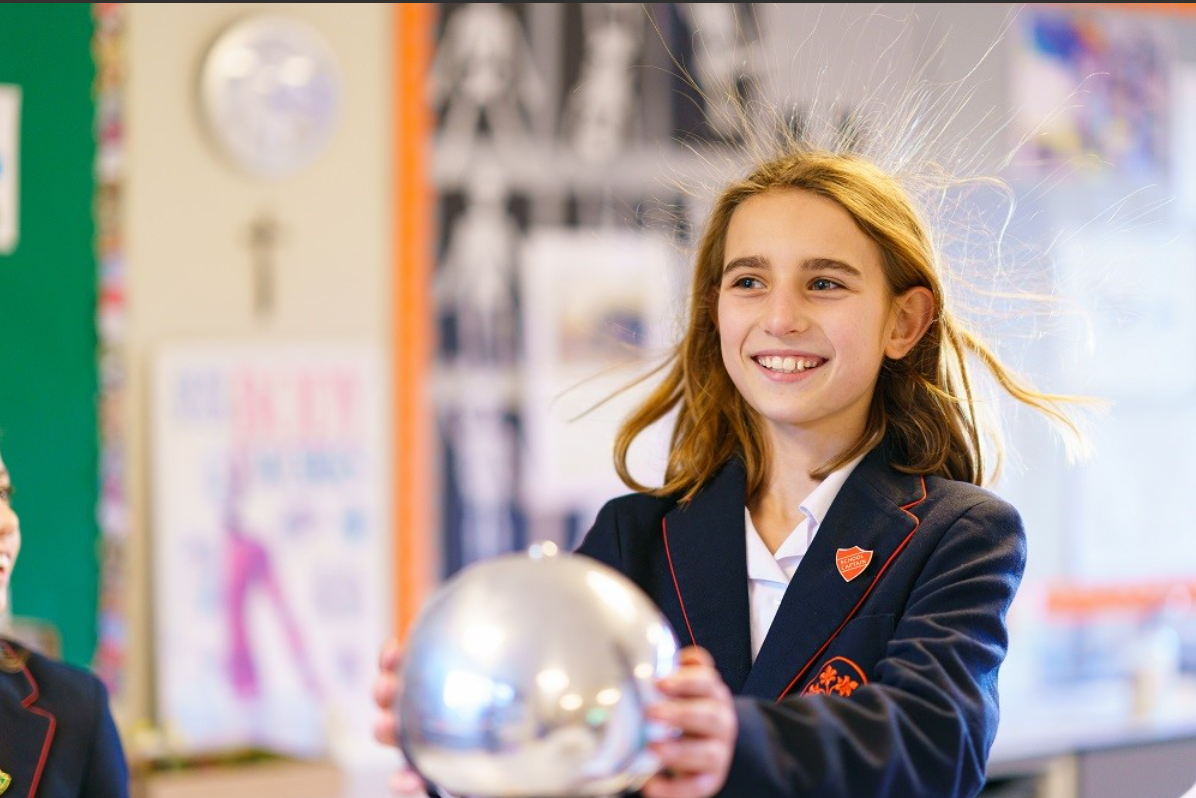
Rare Diseases are a core part of the paediatric research story at NIHR BioResource. 72% of rare diseases have a genetic component, and currently over 900 paediatric rare disease participants are helping BioResource research through clinics and hospitals in England.
This work has taken place for many years, in hospitals like Great Ormond Street Children’s Hospital, and laid the foundations for health research for all children and young people through D-CYPHR – the DNA, Children + Young People’s Health Resource.
The BioResource has involved children with rare conditions such as Cystic Fibrosis, Paediatric Neurodevelopmental Disorders, Type 2 Diabetes in Children and Young Adults, Haemophilia, Bleeding, Thrombotic and Platelet Disorders and many more.
Young champions for rare conditions
Two D-CYPHR Young Ambassadors came forward with their stories of rare diseases in their families and why research matters to them.

Scarlett
“It is important to help the next generation. I want to try and help as many people as possible,” said Young Ambassador Scarlett.
Scarlett is raising awareness of Sanfilippo syndrome, which affects her cousin.
“My cousin has a rare genetic condition called Sanfillippo. It means that at just 8 years old she has severe problems. Sugars build up in her cells which mean they don’t work as they should. This can damage organs, affect growth, mental development and behaviour. There is no cure. But I can potentially one day make a change to her life and others with rare illnesses, by simply spitting into a tube.”
How rare is Sanfilippo? 1 in every 70,000
There are four different types, caused by four different genes.

Bea
Bea has Muckle Wells syndrome – an autoinflammatory disease. It starts in childhood - recurrent episodes of fever, skin rash, joint pain, abdominal pain and conjunctivitis are caused by NLRP3 gene mutations.
Bea said: "I’d felt unwell for months so it was a relief in a way to get a diagnosis, even though it is something that will be with me forever. I try really hard not to let my illness define me, and I’m lucky that there is a treatment. I keep going even when I’m in pain and was proud to win 18-0 in netball match this week."
Her mum Lucy said: “The more we know about rare genetic conditions, the more treatment options become available to patients. The information that comes with a diagnosis is also extremely helpful for families. I would encourage anyone to take part in genetic research because it has such potential to benefit the whole population.””
How rare is Muckle Wells? Unknown. But Muckle-Wells is in a family of autoinflammatory syndromes (CAPS) that affects 1 in 1,000,000
Launching D-CYPHR at GOSH
Making this rare disease day particularly special, has been the recent launch of D-CYPHR recruitment for Great Ormond Street Hospital. Now D-CYPHR is open not just for rare diseases, but for all children through GOSH.
A big thank you has to go out to the many young rare disease pioneers who have made a difference over so many years by joining in with research.
If your family would like to support research for children and young people, sign-up on the D-CYPHR web page: https://bioresource.nihr.ac.uk/dcyphr/
It is open to every child and young person aged 0 –15 in the UK.